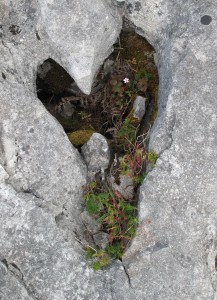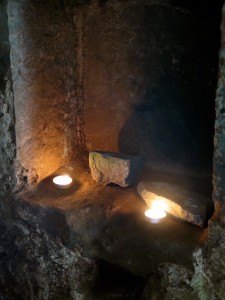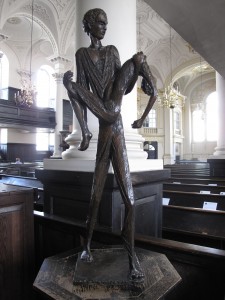My priceless son-in-law was due to travel to Nepal sometime around May 12 as part of a geological research team, exploring rock formation and tectonic plate shift in that area of the world. By sheer happenstance he is still safe in the United States while the world watches in horror what happens when one of the earth’s most stressed plates shifts…right on schedule, according to a French team that returned from the Himalayas to release its own report (with a sense of impending doom) just days before the earthquake that has left at least 6000 people confirmed dead and upwards of fifty thousand casualties.
Food, shelter, and medical supplies were virtually non-existent up to 36 hours ago, as the airport in Kathmandu has been hit by repeated aftershocks, keeping relief teams and supplies from landing. Nepalese medical teams have been working around the clock without respite; Britain finally got a 60-member trauma team on site, but French, Japanese and Chinese rescue and medical teams already present have been unable to function effectively with no central plan from the government of Nepal to direct them.
Meanwhile, with almost 1000 foreign nationals still unaccounted for, many more (including some from Mount Everest) have been airlifted back to the EU, amid understandable and growing anger from the people of Nepal who have been left homeless, waterless, hungry, and in need of medical care in the rubble of age old World Heritage Sites.
I am in the EU at the moment, so I don’t know what the media are reporting State-side, and how much attention this humanitarian crisis is still receiving. But even here in Britain, where news stories tend to have longer legs, as they say, the headlines have shifted back to the national elections. And I find myself deeply troubled. We talk about a global village, but I think the vast majority of the world does not experience a sense of global connection. I think the vast majority of the world’s citizens get plenty of news about the powerful and wealthy nations – enough to know what they (personally) live without – but I don’t sense a reciprocal interest by the wealthy, educated folks of the USA, or Canada, or the EU, or Russia for the suffering or need (or for the hopes and dreams and visions) of the other 90% in this global village — including the indigenous peoples of every continent who have been pushed to the periphery of the power and rendered voiceless (if not dead) by immigrants from more powerful nations who had the muscle or firepower to exploit the land and resources they found when they arrived on distant shores.
In the interests of honesty, I have not dropped my suitcases with friends in Somerset and bought a ticket to Kathmandu with a backpack full of bandages and antibiotics. But I haven’t written a check, either…and that is a modest something I will do when I finish writing this blog.
I don’t want to suggest that this is a simple issue with a self-evident solution. It is, rather, a complex issue with many thought-provoking questions that would benefit from some serious attention, however uncomfortable it makes me feel.
For instance, I have never had an urge to climb Mount Everest, but I know what I know and, among other things, I know that the cost to tourists who want to summit the mountain averages somewhere in the area of $70,000 (which is very close to our annual household income and between 100 and 200 times the annual income of the Sherpas who make that trip possible.) But when a Sherpa dies on the mountain – as 16 did last year in a devastating avalanche just as the climbing season was beginning – the government of Nepal offered to give the families of the dead the equivalent of $400. The life insurance policy carried by the climbing companies who employ the Sherpas is about $10,000. That sum is, you will forgive me, a pathetic payment for a human life cut short so that a sports enthusiast can cross something off her or his bucket list.
That said, the tourist dollars from Australia, North America, Europe, China, Russia go a long way toward supporting the government of Nepal; they provide a huge percentage of the annual income in that country. But those same tourists stress the environment of the mountains beyond anything we know it can sustain – the weight of climbers and equipment on some of the ice faces is huge, contributing to deadly dangerous conditions.
[I have chosen Nepal because of the current situation, but tourism income (including ‘eco-tourism’) is disproportionately essential to many small, less developed countries whose stunning beauty attracts the attention of people living in dense urban settings.]
One of the questions that haunts me is about values. Whose values prevail and why? To put it in the terms of this blog, Are untouched beauty or unequalled challenge nothing more than commodities to be purchased by the highest bidder? Or are those blessings and resources to be carefully protected and sustained for the good of all? And then who gets to decide who experiences them? And what, then, is the benefit to a nation of people from the use of a ‘natural resource’ like the Galapagos, or the Amazon Basin, or Everest? Can the people of a country not use their ‘own’ resources at all if the world deems it too important to be opened to unmeasured use?
How, then, do we – the citizens of this global village – make it possible for the sherpas and their families, or the people of the Amazon Basin, or the people of Ecuador, to live and work and eat and be sheltered and clothed if we take away the tourist dollars that currently do that? How global is our global village? How widespread is our common good? How do we equitably balance the giving and the taking? How do we share honestly and fairly with our sisters and brothers who inhabit this world with us, and how do we share with the generations to come?
I don’t have an easy answer, but I think we have to start by caring, truly caring, about the tragedies that claim not only lives in the World Trade Center, but in Kathmandu and Sumatra and Bhopal. And I think we need to care for longer than five days. I think we have to start by owning our own complicity in creating conditions that make inequity rife, and that pervert the wise values of cultures for whom profit is not the bottom line.
 I suspect we need to stick with the discomfort we feel until the stress builds higher and higher and the deep, undergirding plates in our hearts and souls shift like the plates beneath the Himalayas…until a new, transformed reality emerges.
I suspect we need to stick with the discomfort we feel until the stress builds higher and higher and the deep, undergirding plates in our hearts and souls shift like the plates beneath the Himalayas…until a new, transformed reality emerges.
It will be messy and sorrow-laden, I suspect, as we shed the snow and ice that has encased us, and reveal the raw bones that support our one humanity. But I suspect our common life will be the deeper and richer for it.
May it be so.
–Andrea
Text © 2015, Andrea La Sonde Anastos
Photos © 2015, 2011 Immram Chara, LLC
NOTES:The first photo was taken in St Govan’s Chapel in the south of Wales. The photo of the sculpture is called ‘Victims of Injustice’. It is the work of Chaim Stephenson and stands in St Martin’s in the Fields in London.
Yesterday, May 1, the seasons switched on the website (from Imbolc to Beltane). New pictures went up in the home slider and blog slider. However, the Etsy shop is joining us on sabbatical – so cards and fiber art will not be available for purchase until the early days of of Lughnasadh — probably around August 5.


